I have synesthesia. I see music as color, shape, movement, pattern, texture and even little vignettes in three-dimensional space.
The few people I’ve talked to with music → visual synesthesia see either color or shape, or color and shape, but I’ve never met anyone else who experiences, color, shape, movement, pattern, texture, personality, and other abstract constructs (and even sometimes cartoon characters and aviation battles) in a whole three-dimensional experience in their mind like I do.
Say, for example, my mind’s eye is actually a stage without a floor or gravity (meaning the players aren’t stuck to the stage floor like us piddly humans) and I am in the audience looking at it. Although, sometimes, I see the stage from above like this diagram and sometimes I’m on the stage itself:

Sometimes the whole stage moves, other times, it’s just the players. Some notes are in the apron, some in the wings, some play in stage right or left. Some notes move from apron to upstage, some from upstage to apron, others cross from wing to wing, and still others are in the audience behind me. Some of it moves diagonally and some moves in spirals, and some of it moves up. Lower register notes are typically closer to the stage floor, while upper register notes are way up near the stage lights.
Do you see how this would be difficult to describe? And that’s just the movement. We haven’t even gotten into color or texture. Some music is sharp, not musically sharp as in sharps and flats, but quite literally sharp like a knife. Some of it is soft and fuzzy like a bunny. Some is thick and wide, some is thin like a pencil line.
All of this variation and description is why, even though I’m an artist, I have never been able to capture what I see. It is constantly changing, moving, growing, building on itself, subtracting, etc. In order to capture what I see, I would have to paint just one second of music, like a snapshot of a car race. You can look at the picture and maybe tell it’s a car race, but you have no idea what happened in the whole race. You just see one tiny millisecond of it.
This is why I’m absolutely fascinated by artists who manage to capture what they see. Today, I’m sharing with you a few artists who are purported to be synesthetic. Of course, some of them are no longer alive, it’s impossible to verify, but based on their art, I would say they were.
Vassily Kandinsky
Of course, I start with my favorite of all the synesthetic artists. It has not been entirely verified that Kandinsky had synesthesia, but his art is the closest to what I see, so I’m going to go ahead and say that he did.
This is one of my favorite paintings by him (along with the other Composition paintings) because I can see the three-dimensional music of it. I’m not sure if I can explain, but it starts in the top right corner, as if that’s the stage floor, and builds down diagonally to the left.
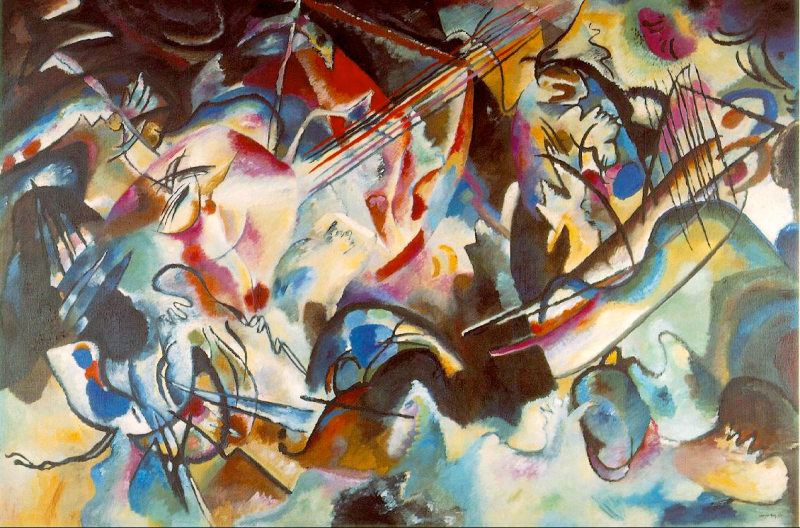
It’s upside-down though, since the darker colors should be on the bottom.
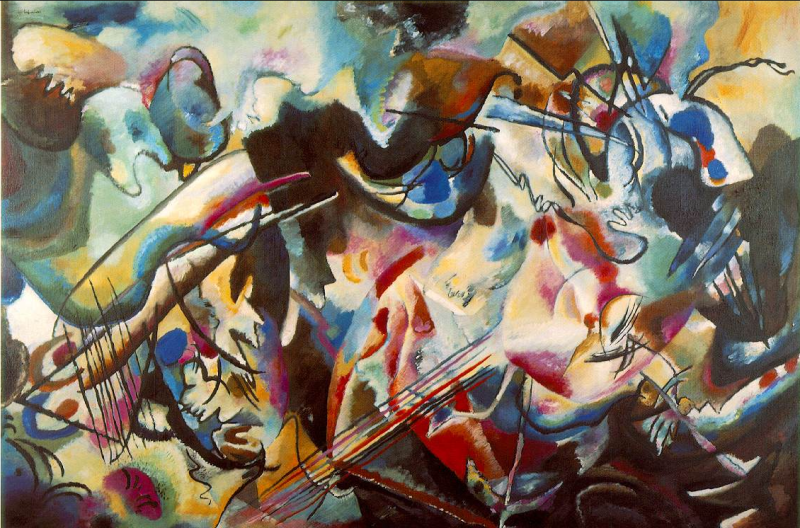
There. That’s better. Now it starts in the lower left and builds up towards the right as it should. If I owned this painting, I would hang it upside-down.
David Hockney
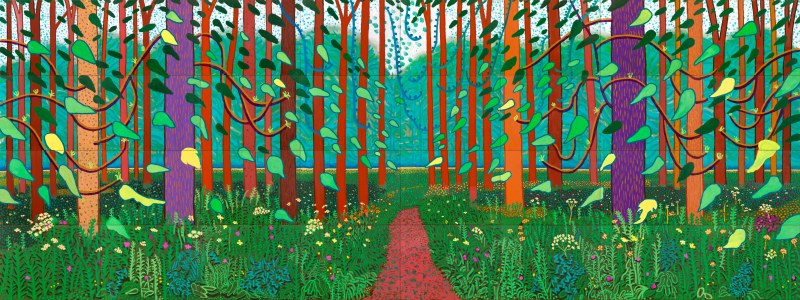
I’ve seen music like this before. I creatively call this “moving through a forest” type of music. Although, typically when I see it, it’s darker colors as if you’re moving through an unnaturally colorful forest at night. It would be super helpful if these artists ever told you what they were listening to when they painted it.
Vincent Van Gogh
The saturation on this one struck me as synesthetic.

Especially, when I saw that he did essentially the same painting in two entirely different color schemes.

Those paintings are both from 1888, but I wonder how much time there really was between paintings.
Charles Blanc-Gatti
This one’s a no brainer. It’s even called L’Orchestre (The Orchestra).
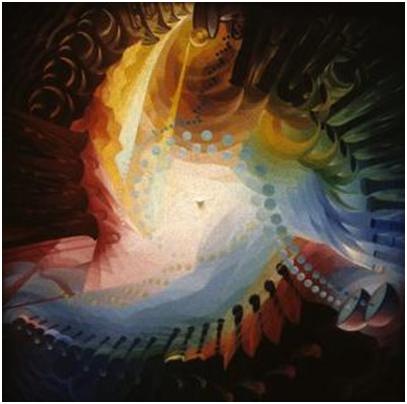
Edgar Degas
Some say Degas assigned moods to color or color to moods. I’d say it’s true, because I do the same. Green, pinks and reds are movement and anxiety…
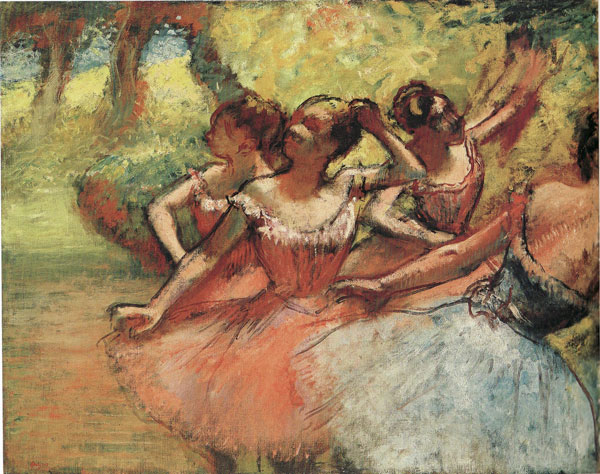
And blues and yellows for lack of movement and a sort of relaxed boredom…

Timothy Layden

He has a whole multimedia section on his website where you can listen to paintings. Strangely (or not so strangely, since we all see different things), the sounds he has there don’t look anything at all like I see them, and the music I see in his paintings is different, too. I see more orchestral or big sound in the painting above than what he has on his website.
This one looks a little Kandinsky to me in the way it builds up from that dark splotch of blue near the lower center in a tower of sound (if that makes any sense, which it probably doesn’t).
Joan Mitchell
If I painted abstract (which I don’t) and I could paint the music I see (which I can’t), Joan Mitchell’s paintings are probably as close as I could come to painting what I see and it still wouldn’t be accurate.
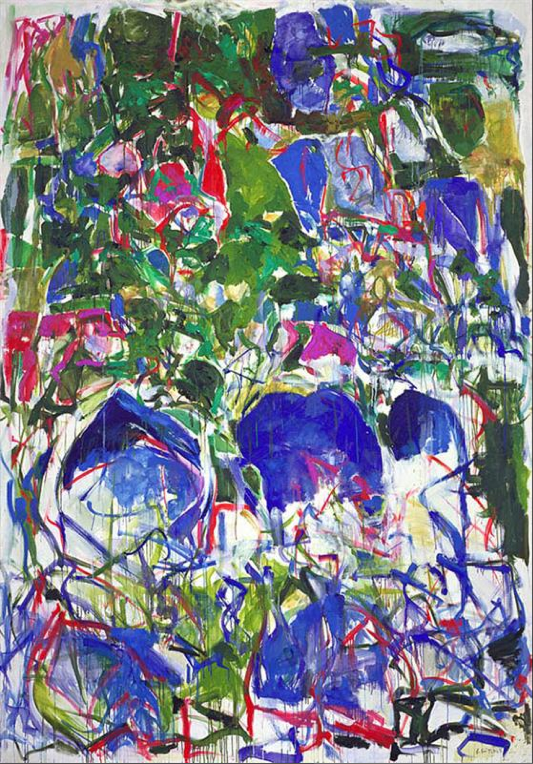
George Sanen
Sculptor and painter, George Sanen, creates what he sees. His is way more structured and more patterned than mine, and I often have multiple patterns in one song, but I give him props for saturation and three-dimensionality.
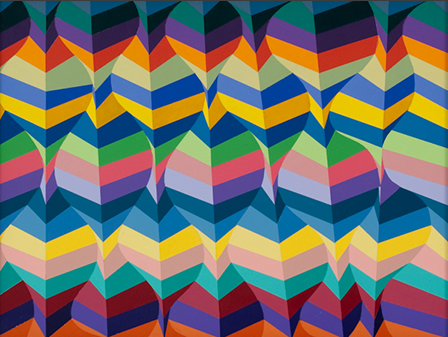
I find it interesting that he’s also a sculptor who tries to capture it in three-dimensions.
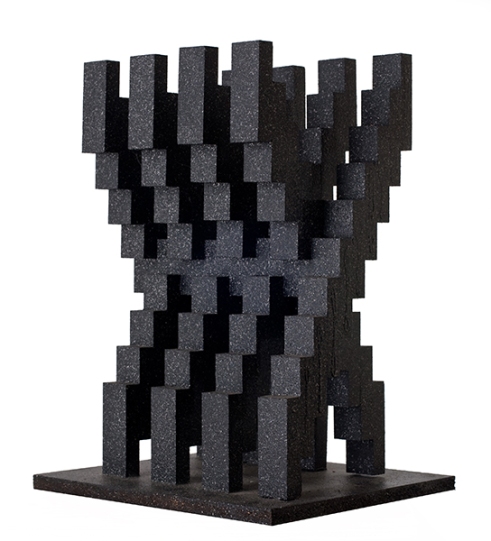
This post was inspired by a post about art and synesthesia at Not A Punk Rocker.
All paintings in this post, unless otherwise linked, are from wikiart.org.







